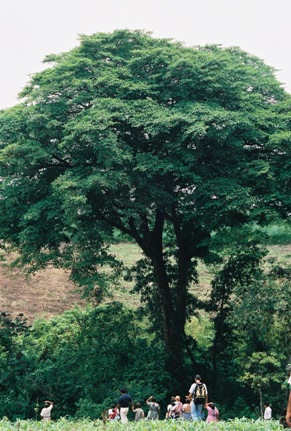- Ramón seeds come from the fruit of the Brosimum alicastrum tree, which grows in Central America. They are nutrient-rich, zero-fat seeds that were a traditional food of the Maya whose name for the tree meant “the corn tree”. Since the seeds could be dried and ground into flour and were capable of being stored for lengthy periods of time, they were an important supplement to corn in the Maya’s diet.
- The ramón tree is a member of the fig family, which also includes mulberry trees. At 130 feet tall, ramón trees are part of the forest canopy in Central American rainforests. Ramon seeds do not contain tree allergens like almonds, walnuts and pecans because they are the seed of a fruit, not a tree nut.
- Ramón seeds have twice the amount of calcium as corn, oats or quinoa. They are very high in potassium with 3-4 times as much as corn, oats or quinoa. Ramon seeds have a high fiber content compared to corn, oats, and quinoa, but not as much as chia that has the highest fiber content of all.

Ramón seeds have a medium amount of protein, similar to corn and rice, but not as high as oats and quinoa. However, they are high in one important amino acid that has great effects on stress and anxiety, tryptophan, the amino acid that also helps promote sleep. Tryptophan can help relieve depression too as it boosts the production in the brain of serotonin. Ramón seeds have five times the amount of tryptophan as oats or whole grain wheat flour and three times the amount found in turkey, which is famed for its relaxing effect for post Thanksgiving dinners.
Fresh ramón seeds can be boiled like potatoes or dried and ground into a flour. The flour is fat-free and gluten-free making it an excellent addition to increase fiber and nutrients in baked goods. Its flavor when dried is quite neutral but when roasted, the flavor becomes very coffee-like.
- Protecting ramón trees from being harvested for lumber is a prime effect of giving value to the seeds as an important food source. In recent years, aid has been provided to educate women in the Central American communities to learn how to harvest, dry and cook with ramón seeds. The harvest and sale of the seeds has provided economic opportunities for families living in rural communities where income sources are scarce.
